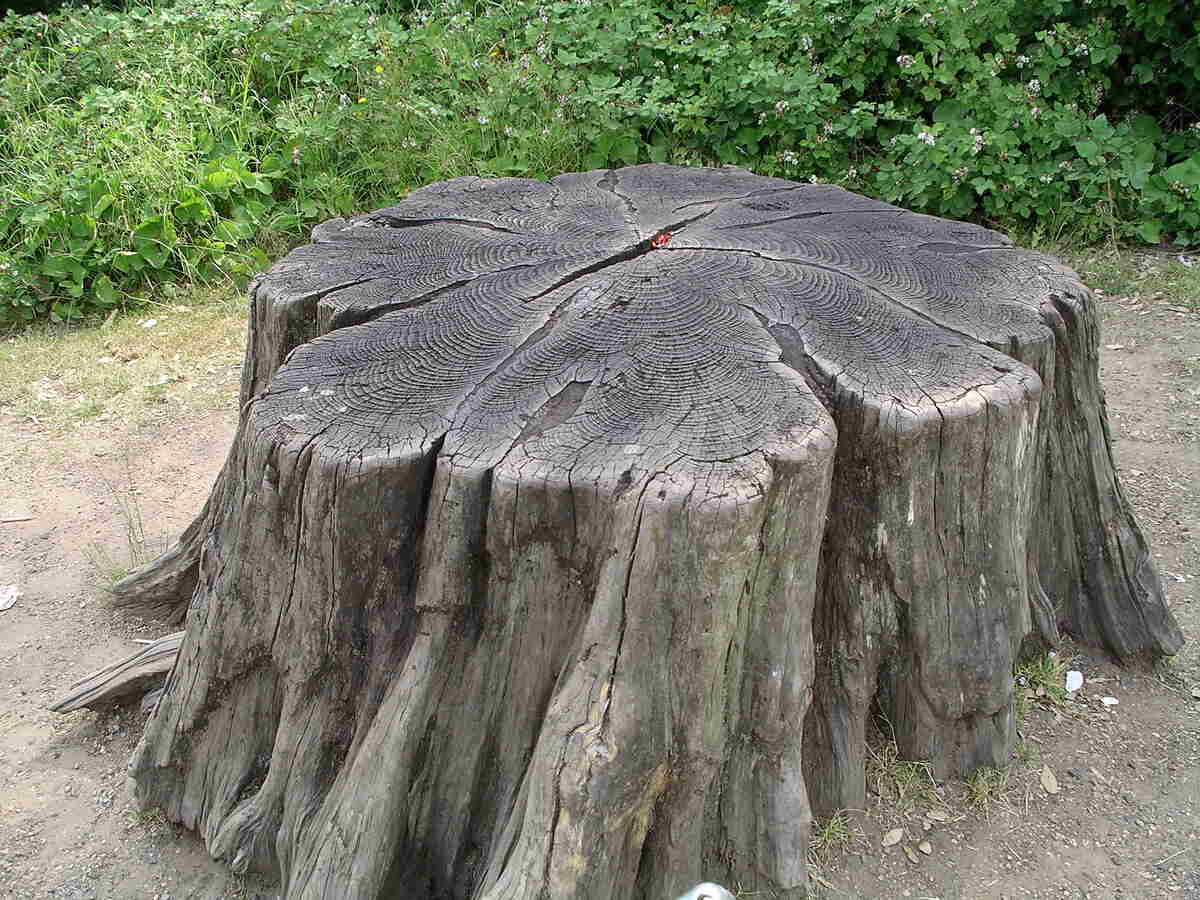
With that big old tree now chopped down, it’s no longer a hazard to the power lines. And there’s more light flooding into your home. The problem, though, is that it left a mark – specifically a large stump – that’s now become an eyesore in your landscape. So how do you get rid of it? Do you even know how to kill a tree stump?
Fortunately, there are several ways to kill tree stumps besides hiring a professional to extract them. You can take the DIY route and save a lot of money, but you also have to be patient and diligent. Most of all, you need to know the proper steps to get rid of the dead stump.
Ways to Kill a Tree Stump
You can always convert a tree stump into something appealing, like a coffee table or a planter. But sometimes you just want to remove it to clear space in your yard. While you can simply ignore or conceal the tree trunk, keep in mind that you’re also giving it a chance to grow back. It would be better to get rid of the stump entirely by choosing one of the following tree stump killer methods.
Use Epsom Salt
With its sulfur and magnesium content, Epsom salt is known to help plants grow, but only if used in moderation. They are known to be fatal in large quantities – and this is the effect you would want for killing the stump.
When you mix Epsom salt (magnesium sulfate) with water, you’re basically creating a poison that would cause the stump to decay. Successful application of this method can eliminate your problem in less than a year. But you’ll start seeing results in just a matter of two to three months.
What You’ll Need
- Power drill with wide drill bit
- Epsom salt
- Water
- Tarp
Steps to Perform
- Using your power drill, start drilling holes across the surface of the stump. Make the hole about 1 inch wide and 8 inches deep. If you have a longer drill bit, it would be better to make it 12 inches deep, as it will ensure the salt solution will penetrate the roots.
- Pour Epsom salt into each hole about 3/4 full. Remember to do this carefully, as you don’t want the salt to scatter in your yard and kill your lawn. Then, sprinkle the stump with water to help soften and liquefy the salt.
- Using a tarp, cover the stump completely to prevent the substance from being washed away by rain or blown away by the wind.
- Continue doing this salt method every few weeks or at least once a month until the stump dies.
Sprinkle Rock Salt
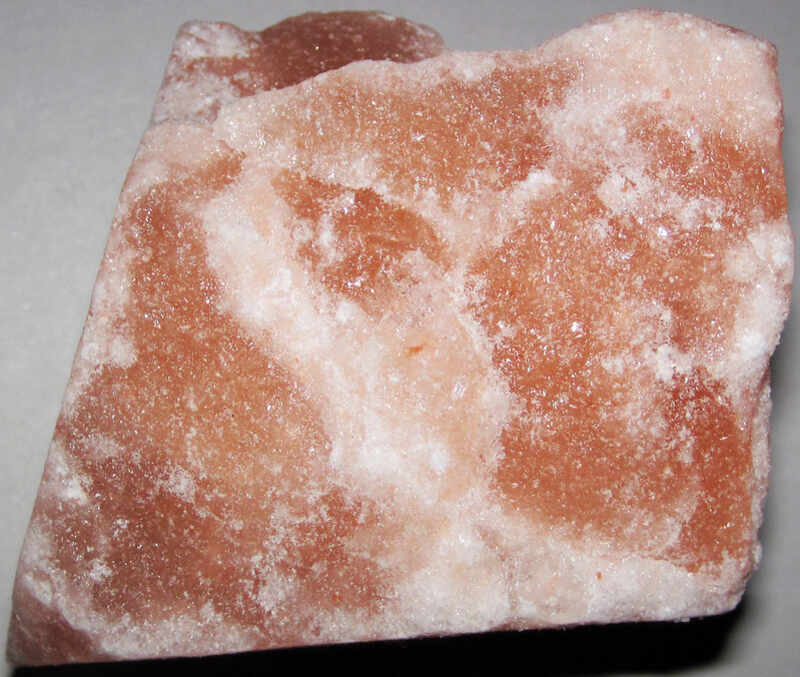
Here is another method similar to Epsom salt, but you’ll be using rock salt instead. Rock salt has bigger chunks of salt crystals than ordinary table salt. It can be harmful to the plants in your landscaping, especially those near the tree stump. In fact, common salt (sodium chloride) has been used in ancient biological warfare to destroy fields and crops. That’s why it’s better to try killing the tree stump using Epsom salt first before resorting to this method.
What You’ll Need
- Power drill with wide drill bit
- Rock salt
- Water
- Mulch
Steps to Perform
- Drill holes about 1 inch wide and 12 inches deep. If you have a shorter drill bit, 8 inches should be good enough. Do this several times across the surface of the stump.
- Add rock salt to each deep hole – about 3/4 full. Then add a layer of soil and mulch on top. This top layer will help maintain moisture in the rock salt once the water has been poured.
- Pour water over the mulch to help dissolve the salt, allowing the tree’s roots to absorb the solution. It also will accelerate the stump’s decay because the saltwater helps encourage fungal growth.
- You will have to continue pouring water over the mulch every day for the first two months to keep it moist, supporting the growth of fungi.
Pour Boiling Water
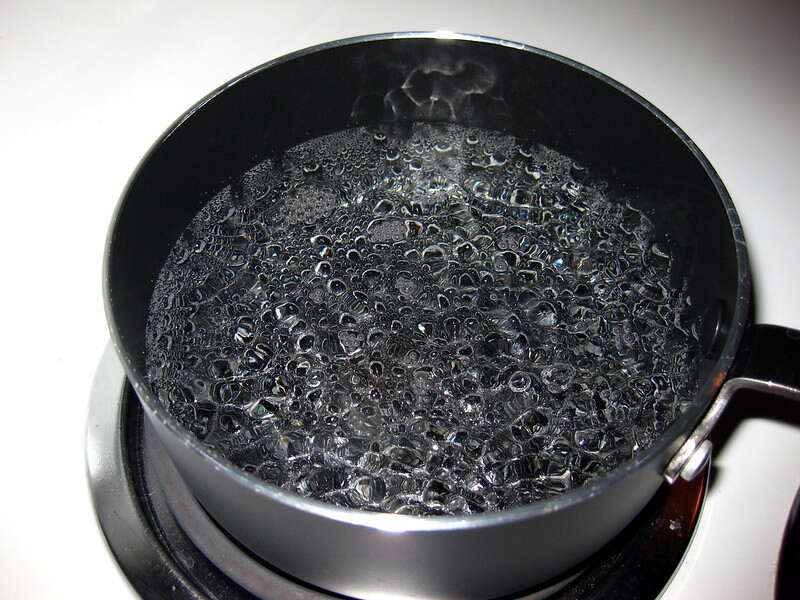
Not all homeowners have a large amount of Epsom salt available at home. So if you’re looking for the most inexpensive tree stump removal method, this is perfect for you. In fact, this is also one of the quickest ways to do it, as the extremely hot water can cause intense damage to the root system, effectively shocking and killing the stump.
You should remember, however, that it still takes months for the decomposition process to complete. You’ll have to wait it out for a few months before you can easily remove the stump.
What You’ll Need
- Power drill with wide drill bit
- Spade
- Shovel
- Boiling water
Steps to Perform
- The first step is uncovering the tree’s root structure. Using a shovel or a spade, expose as much of the root as possible.
- With your power drill, drill holes across the top of the stump and into the roots. This will help the boiling water to penetrate deeply.
- With the holes in place, carefully pour boiling water over the exposed roots and on top of the stump. The boiling water will cause severe damage to the tree stump and the root system leading to its death. Only after it dies will its natural decomposition begin.
Cover/Starve the Stump
Here is another inexpensive technique you can use to kill tree stumps. Covering the stump kills it by denying it of its basic needs — sunlight and water. The basic idea is to prevent these necessities from reaching the tree stump. It will effectively stop the stump’s growth and will eventually lead to its death. While this method is slower than the boiling water method, it’s also less drastic.
Another benefit of this method is that it’s a sort of set-and-forget kind of approach. Once you leave the cover in place, you simply have to wait about six months or more for the stump to die. Keep in mind, though, that since the decaying process only starts after it dies, it can take even longer before you can completely remove the stump from your yard.
What You’ll Need
- Pruning shears
- Waterproof opaque cover (tarp or trash bag)
- Twine or rope
Steps to Perform
- Cover the tree stump with an opaque tarp or trash bag and tie it securely with twine or rope. You should use a cover that will not allow any light or water to pass through it.
- Wait for up to six months for the stump to die. Still, take some time every now and then to check how things are, ensuring that the cover is still in place.
- Since you’re restricting saplings from sprouting on top of the stump, you might see them popping out near its base. When this happens, you should cut them with your pruning shears.
Use Chemical Treatments
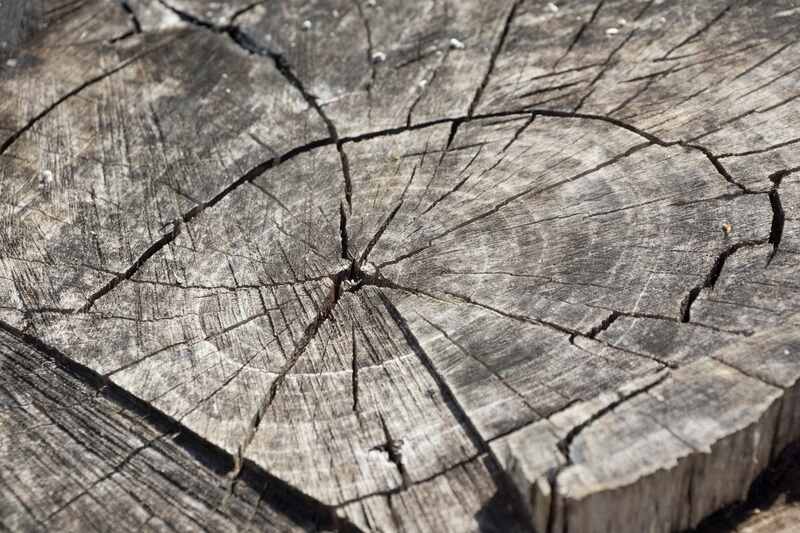
Like the previous method, chemical treatments don’t require much effort. While using chemicals is unnatural, it can actually speed up the time it takes to kill the tree stump and even its decomposition process.
If you’re concerned about whether it is harmful to other plants in your yard, you shouldn’t be. Most of these products typically use potassium nitrate as their active ingredient. Commonly known as saltpeter, this chemical is not harmful to the surrounding vegetation. But if you want to be sure, it’s always best to read the label and follow the manufacturer’s instructions.
There are essentially two groups of chemical products you could use, depending on what you want to accomplish.
- Insecticide-based stump remover: If your purpose is to kill the stump, you must use this product immediately after cutting down the tree. Doing so will allow the chemicals to penetrate deeper and faster down the roots. The insecticide will help kill the stump and restrict any regrowth.
- Tree stump remover: If the stump is already dead, it can take a long time for the natural decomposition to happen. Using a tree stump remover like Spectracide can help reduce the waiting time from years to as little as six weeks.
What You’ll Need
- Chemical treatment product
- Protective goggles
- Protective gloves
- Chainsaw (optional)
- Power drill with wide drill bit
Steps to Perform
- It’s ideal if the stump already sits low on the ground. If not, wear your protective goggles and gloves and use a chainsaw to remove as much of the tree trunk as possible. We also recommend removing the bark, as it can slow down the decomposition process because of its waterproofing characteristics.
- Drill holes across the top of the stump 1/2 to 1 inch wide and 6 inches deep. The goal is to make the holes deeper than the surrounding soil, so if the stump is still a little higher, you may need to dig up to 12 inches deep.
- While still wearing protective goggles and gloves, start pouring the chemical treatment into the holes. Remember to read the label and follow the manufacturer’s instructions.
- If the chemical product you’re using is not liquid but in powder form, the instructions will most likely tell you to add water. It will help dissolve the chemicals so they can be easily absorbed.
- Apply more chemicals in the next few days as instructed. In a few weeks, the stump will start to feel spongy, which means it has decomposed and is ready to be physically removed.
Ways to Physically Remove a Stump
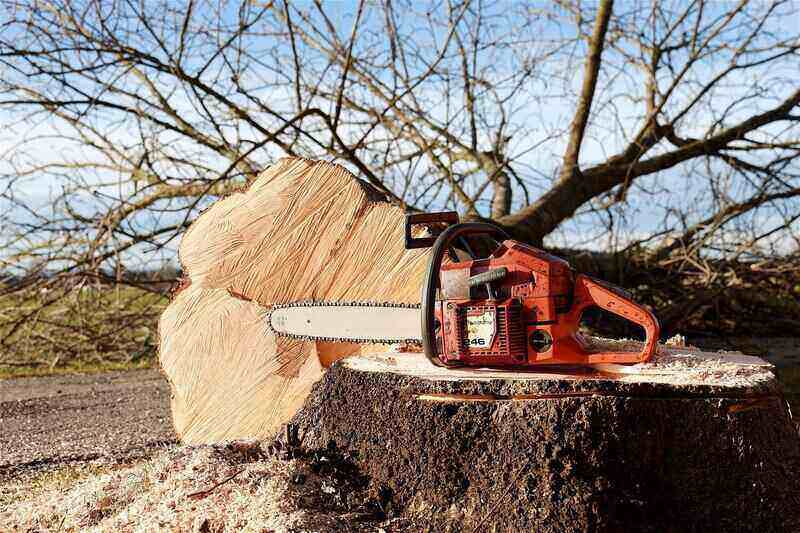
Killing a tree stump and allowing it to decompose before removal has one major flaw – it can take a lot of time. Physically removing a stump is the fastest method. Yes, it would require much effort, especially if the root system is expansive. But it will get rid of the eyesore in your yard much faster.
Before picking up that spade or renting a stump grinder machine, it’s better to get acquainted with the different methods, as they each come with their own sets of challenges.
- Digging: Digging out a tree stump is the first approach that would come to mind for most people because it’s quite logical. However, this is a time-consuming and labor-intensive process. For tree stumps 12 inches in diameter or less, digging will be efficient as the root system is relatively small. However, large stumps would require bigger tools and more expensive machines because the roots are thicker and more extensive. Unless you’re used to this kind of labor, it’s best to hire experienced professionals to do it for you.
- Grinding: Grinding is the fastest method to remove tree stumps, but it requires a piece of special equipment. Also, the stump grinder can make wood chips and rocks fly everywhere, and can even cut utility lines. But if you love DIY projects and still want to do the task yourself, you can rent a stump grinder machine instead of buying one. You must wear protective gear, such as safety glasses, protective gloves, and hearing protection. Once done, remember to collect the wood chips with a rake and fill the hole with topsoil. You can even use these wood chips as mulch for your flowerbed.
- Burning: Even if the tree stump has already dried out completely, you can still get rid of it using the burning process. Compared to digging, this method is less time-consuming. While it does not remove the roots under the soil, it can still remove the eyesore without messing up your yard. However, before proceeding with this approach, you must consult your local fire department first. You need to know beforehand if there are any burning advisories in your area. Also, remember to remove any trip hazards and flammable materials like scrap wood, paper, and plastic bags within a 20-foot radius of the stump.
Things You Shouldn’t Use to Kill a Tree Stump
Some homeowners have common misconceptions about the effectiveness of certain products for killing a tree stump. However, you should avoid using these chemicals at all costs. Not only will they be unsuccessful in removing your tree stump, but they also can harm the surrounding plants.
Bleach
Bleach is never intended to be used as an herbicide. While you could still kill a tree stump by pouring large quantities of bleach over it, you’re also putting the surrounding plants at risk. High concentration of chlorine significantly raises the soil pH, which is very toxic to plants.
Use bleach for cleaning or other applications as intended. And leave the tree stump killing to the methods we provided above.
Diesel Fuel
Diesel fuel does not blow up like gasoline, which could be the common reason why misinformed stump burners use it. But while it may cause the stump to burn, it’s not really that effective because it doesn’t provide the long and steady burn needed to break down the wood.
Using diesel fuel as a chemical stump killer could work, but you’ll need to use large quantities. You also might have to mix it with another chemical to make it more effective – which can be a very dangerous and unsafe thing for you to do at home.
You can achieve better results with Epsom salt or even a triclopyr chemical stump killer. Just remember to follow the manufacturer’s instructions when using store-bought stump and brush killer.
Motor Oil
Motor oil has its own use – and it doesn’t include killing tree stumps. It’s not only messy to use and works slowly, but it also will cost you more. Think about it. The cost of a quart of motor oil is almost the same as that of a chemical stump killer – and you’ll need large quantities for the motor oil to be marginally effective. You’re not only wasting time but also money.
FAQ About How to Kill a Tree Stump
If you don’t take a tree stump out, it can take three to seven years for it to die on its own. Depending on the environmental conditions, though, it might just end up growing back into a tree if left on its own.
Even if a tree has already been cut down, the stump left still has its root system. While it might seem that it’s already dead, the stump’s roots can still gather nutrients from the soil, light from the sun, and water from the rain. It’s only a matter of time before you start seeing new shoots and sprouts popping up again.
The cheapest method is to cover it with a light and water-resistant tarp. Keep in mind, though, that while it’s faster than allowing the stump to die naturally, it’s not as fast as other methods.
Get Rid of That Tree Stump and Reclaim Its Space in Your Yard
Removing a tree from a yard is already a tedious process on its own. But when you’re left with a tree stump that’s an eyesore in your yard, it can make the situation more frustrating. With the stump firmly rooted to the earth, you’ll need to apply one of the removal methods mentioned above to help you get rid of it sooner than years later. Want to get rid of your tree stump fast, with no effort on your part? Connect with experienced professionals in your area today.
Main Image Credit: Snowmanradio / Wikimedia Commons / CC BY-SA 2.0